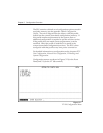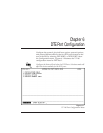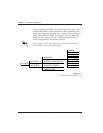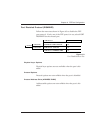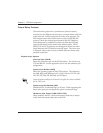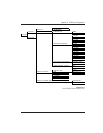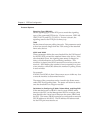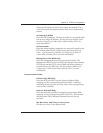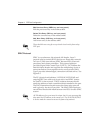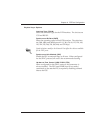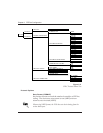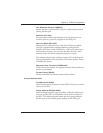
42 FSU User Manual 61200.130L1-1
Chapter 6. DTE Port Configuration
Frame Relay Protocol
The frame relay protocol is a synchronous protocol used to
concentrate two different devices into a common frame relay link
to the network. While configured for frame relay protocol, the
FSU accepts frame relay frames from a router or a FRAD and
routes to/from the network port based on the DLCI address.
The address can be modified or preserved from the DTE and
network side based on the frame relay address table. FECN,
BECN, DE, and C/R states are not changed as frames are trans-
ferred between the DTE and the network ports. The menu tree
in Figure 6-4 shows the choices available when the frame relay
protocol is selected.
Physical Layer Options
Interface Type (CONN)
Select the connector type for the DTE interface. The choices are
V.35 and RS-232. See the appendix Pinouts for the connector pin
assignments.
Synchronous Bit Rate (RATE)
Select the operating speed of the DTE interface. The selections
are 2400, 4800, and 9600 bps and 19.2, 38.4, 56, 64, 112, 128, 168,
192, 224, 256, 280, 320, 384, 448, and 512 kbps.
Speed selections made for the Network Port affect the choices available
for the DTE ports.
Synchronous Idle Method (IDLE)
Enable the FSU to transmit flags or all ones. When operating the
frame relay protocol, configure this option to transmit flags.
Hardware Flow Control (HDW FLOW CTRL)
When enabled, the FSU varies the transmit clock rate to tempo-
rarily limit the transmit data rate to the FSU.



